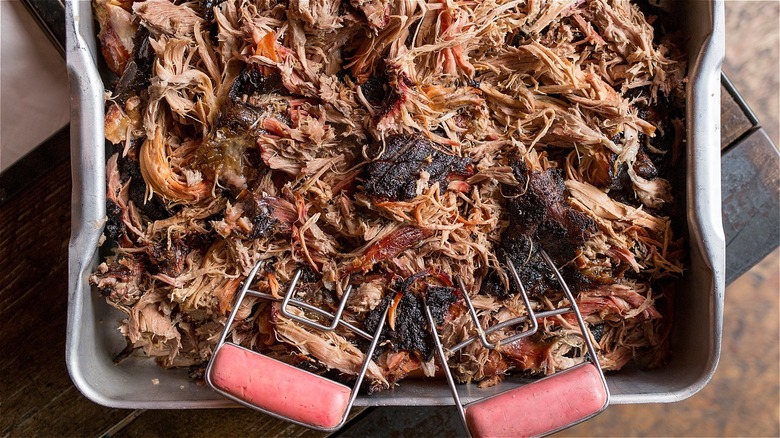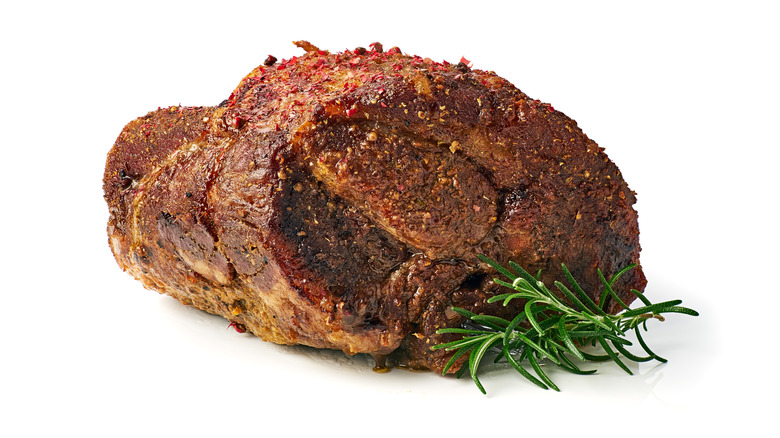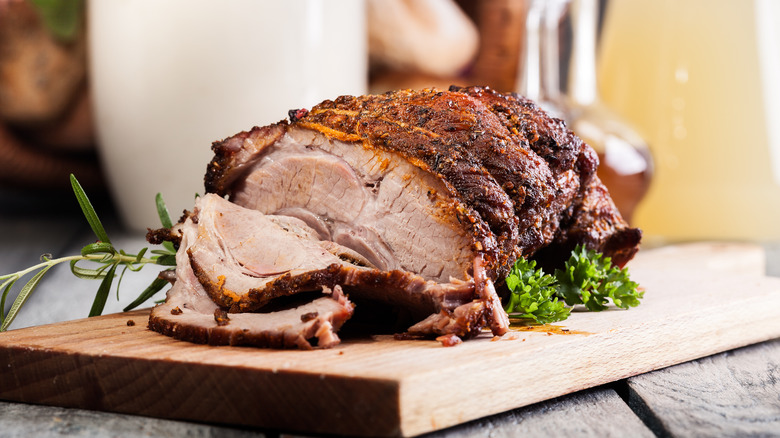Pork Shoulder Vs. Pork Butt: The Differences To Keep In Mind
Pork is the preferred meat of choice for about 36% of the world, with poultry coming in second at 33%, beef in third with 24%, and sheep and goats in fourth at 5%, as of 2019, according to the United States Department of Agriculture (USDA). Pork is a versatile meat and is typically sorted into four different cuts: shoulder, side, leg, and loin (via USDA's Food Safety and Inspection Service). The shoulder section is a large cut that's further cut into two smaller sections: pork butt, which is the top section; and pork shoulder, which is the lower section, per MasterClass.
Pork butt and pork shoulder are two similar cuts of pork that do actually have a few key differences that are important to keep in mind. Despite its name, pork butt doesn't actually come from a pig's behind. In fact, it comes from the shoulder region, and so does pork shoulder, of course, per BBQ Champs Academy. Pork shoulder may also be referred to as picnic roast or picnic shoulder, while pork butt can also be called Boston butt. Here are some more differences between pork shoulder and pork butt.
Pork shoulder is less fatty than pork butt
Compared to other cuts, pork shoulder is a tougher cut of meat because it comes from a pig's shoulder, which is a muscular area that gets a lot of movement, according to BBQ Champs Academy. This means that pork shoulder could be a bit chewy, depending on how it's cooked. However, pork shoulder does have a decent amount of fat that gives it flavor, but pork butt has a lot more fat marbled throughout the meat that keeps it juicy and tender.
Both cuts of pork have boneless and bone-in options and are a rather affordable cut of meat in comparison to others, such as beef, with pork shoulder being cheaper only because it's usually smaller in overall size than a pork butt. A pork butt is typically cut to resemble a rectangle, while a pork shoulder will look like a triangle. Oftentimes, pork butt will be sold without the skin, and pork shoulder is sold with the skin, per MasterClass.
Pork butt is great for slow cooking; pork shoulder is best roasted
As far as cooking goes, pork butt is one of the best cuts of pork to slow cook at a low temperature because that will give all of the fat enough time to soften and seep into the meat, adding levels of flavor and tenderizing it (via BBQ Champs Academy). Since pork shoulder has less fat than pork butt, it's best to roast it at higher temperatures for less time to get a good crisp on the skin. Pork shoulder and pork butt are also great options for making ground pork and sausages, per Food Network.
Pork butt is most commonly used for pulled pork in barbecue or taco dishes, and it can also be used in stews and dishes that require braising since pork butt is best cooked low and slow. On the other hand, pork shoulder is typically eaten simply roasted on a grill, but it can also be sliced and chopped into smaller pieces for chili or stews, as well as braised just like pork butt. Both cuts are fairly similar, so it really just depends on how and what the meat will be used for. If you want a tender cut of pork and have enough time for low and slow cooking, opt for a pork butt. However, if you don't have as much time and want a crispy skin, then pork shoulder is a better option.


